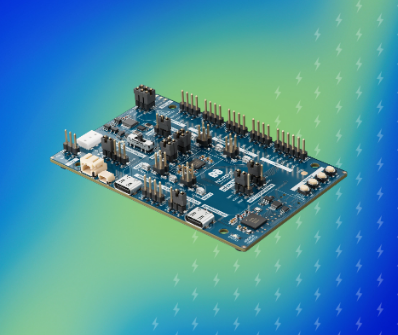Nordic Semiconductor introduces the new nPM1304 power management IC
2025-08-26 16:41:11 1059

Figure. 1
Oslo, Norway – August 26, 2025 – Nordic Semiconductor, a global leader in low-power wireless connectivity solutions, has announced the launch of the nPM1304 power management IC (PMIC), now available for customer ordering and development. The nPM1304 PMIC features a highly integrated ultra-low-power solution and precise battery meter functionality, complementing Nordic’s award-winning nPM1300 PMIC. The nPM1304 supports charging currents as low as 4 mA, making it an ideal choice for smart rings, body sensors, styluses, and other small battery applications.
From now on, all developers can leverage the innovative features of the nPM1304 PMIC to optimize application integration and system performance for small rechargeable battery products.
The nPM1304 PMIC offers unique system management features and is the first to provide industry-leading ultra-low-power precision battery metering for small battery products. Nordic's unique algorithm-based battery metering method utilizes voltage, current, and temperature monitoring, combined with a mathematical battery model, to accurately estimate the battery's charge state with minimal power consumption.
Key features of the nPM1304 PMIC
Up to four regulated power rails: two ultra-efficient buck converters and two LDOs that can function as load switches, enabling up to four independently controlled power rails.
Ultra-low-power precision battery meter: provides coulomb-meter accuracy with effective power consumption of no more than 8µA and zero standby power consumption.
370nA transport mode: Supports long-term storage, minimizes energy loss, and enables wake-up via charging, pressing a button, or disconnecting two connected electrodes (power-off wake-up).
External watchdog: Can pause charging and reset an unresponsive host. Alternatively, perform a power cycle on the entire system.
Advanced system management features
In addition to core power management functions, the nPM1304 includes the following advanced system management features, enabling developers to design more reliable products and enhance the end-user experience.
Hard reset function: Allows users to restart the product by holding down a button.
Boot failure recovery: If the host processor fails to boot, the system is restarted—especially useful for sealed applications where users cannot remove the battery.
Power failure warning: Warns the host that power has been disconnected via a high-priority interrupt.
The nPM1304 integrates these features and functions into a compact 3.1 x 2.4 mm WLCSP package, offering the market an unparalleled power management solution.
Seamless Integration with Nordic Wireless Solutions
Nordic's nPM series PMICs are highly integrated solutions that reduce system complexity, bill of materials (BOM), and board space. By integrating the nPM1304, developers can optimize battery performance and system efficiency in small wireless IoT products. As part of Nordic's complete low-power wireless solution, the nPM1304 PMIC is designed to complement market-leading nRF52, nRF53, and next-generation nRF54 series SoCs, ensuring efficient power management for wearable devices, smart home devices, industrial sensors, and other primarily battery-powered IoT applications.
Designed for next-generation applications
The nPM1304 is suitable for all end products equipped with small rechargeable batteries, including smart rings, styluses, fitness trackers, and personal health monitoring devices. The nPM1304 manages power for Nordic's ultra-low-power wireless system-on-chip (SoC) and other microcontrollers (MCUs), optimized for maximum efficiency and compact size.
Availability and packaging
The new nPM1304 evaluation kit is now available for ordering through Nordic's distribution partners. WLCSP and QFN packages are currently available as samples, with mass production expected in October.




